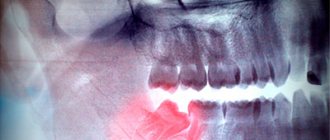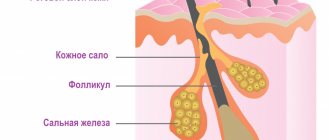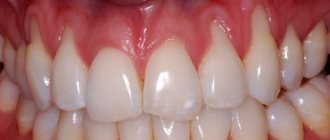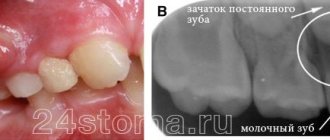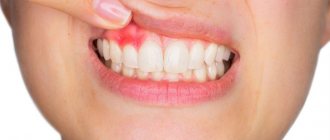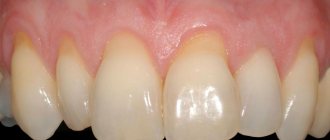How's your husband? alive?
The husband is alive, alive. The tenacious bastard was caught. He did a lot of business and fell unconscious, and not only do I have to sort out the problems he created for me, but I also have a burn.
irinaA, I probably needed the oil right away, and not now, after time has passed? Unfortunately, I can’t follow the link, there’s no technical possibility.
Hydrogen nitrite or ammonia (pictured) is a colorless, odorless gas that has a density half that of air. In various forms, the component is used in production and construction, and can be used in agriculture. A common consequence of careless handling of the product is ammonia burns.
Damage often provokes pain, swelling and redness at the site of the lesion appears instantly. If the lesion covers a large area of the skin, medical intervention is required. The outcome of treatment largely depends on the timeliness and correctness of the actions of the person providing first aid to the victim.
Main reasons
Patients' attention should be drawn to the fact that ammonia is toxic and can only be used externally.
A common cause of injury is self-treatment at home. Patients often use ammonia to treat the mucous membranes of the oral cavity. Burns to the mucous membranes with alcohol can occur when taken orally.
The patient must understand that ammonia solution is prohibited from being used to treat diseases of the oral cavity and ENT organs. The product contains alkaline components that have a pronounced chemical effect. Under their influence, a burn is formed.
The following signs may indicate the appearance of a lesion:
If you receive a burn with ammonia, treatment should be started as early as possible. Comprehensive assistance will prevent the occurrence of dangerous complications in the form of tissue necrosis.
Degree of damage
A skin burn with ammonia is the result of exposure to the active substance. Ammonia can be used for disinfection, but failure to follow the rules for its use will certainly lead to dangerous damage.
You should not use such a component to treat mucous membranes. Such areas of the human body are characterized by increased susceptibility to the effects of various factors. An aggressive substance can cause serious damage to them.
Depending on the strength of the impact on the skin or mucous membrane, the following degrees of damage are distinguished, discussed in the table.
| Features of ammonia damage | |
| Degree | Description |
| 1st degree | Under the influence of ammonia, a focus of inflammation appears at the site of contact. Severe swelling forms and swelling appears on the skin. Painful symptoms do not appear. the patient may feel mild discomfort. Which disappears after a few days. Such injuries rarely cause complications. Complete treatment can be provided at home. |
| 2nd degree | More pronounced symptoms appear that need to be addressed by a doctor. Plaque appears on the mucous membranes, ulcers and blisters form. Bleeding appears in the affected area. When the mucous membranes of the mouth are affected, symptoms of intoxication can be observed. Skin burns with alcohol in rare cases can provoke a rise in body temperature. |
| 3rd degree | A third-degree burn is considered an acute injury, the treatment of which is impossible without medical intervention. The lesion is characterized by the formation of a scab on the mucous membrane, blisters and ulcers appear on the lips, which bleed heavily. |
Read also: How to knock out a person with one blow
A skin burn with ammonia requires immediate medical intervention. The patient must understand that damage to the mucous membranes is even more dangerous. You should not self-medicate; such an injury is a good reason to consult a doctor.
About the consequences
Not only the symptoms of ammonia poisoning are dangerous, but also its consequences. The most common include: dysfunction of the nervous system (nervous tic, loss of balance, dizziness, decreased sensitivity, loss of smell, disorientation, decreased intellectual potential, tremor, memory loss); blindness (partial or complete loss of vision is possible); hearing loss (there is a risk of complete deafness and hearing loss).
Best materials of the month
- Coronaviruses: SARS-CoV-2 (COVID-19)
- Antibiotics for the prevention and treatment of COVID-19: how effective are they?
- The most common "office" diseases
- Does vodka kill coronavirus?
- How to stay alive on our roads?
To avoid such serious consequences, you need to follow simple safety rules. One person's negligence can be fatal to the health of others.
Emergency help
Can there be a burn from ammonia? The video in this article will answer this question. According to doctors, the main danger of the substance is that many patients do not evaluate its chemical activity and neglect to follow safety precautions.
Chemical damage always requires immediate intervention. Providing first aid should begin by calling an ambulance.
Before the ambulance arrives:
- to eliminate pain resulting from continued contact of the skin and the chemical, the damaged area should be rinsed under running water, the skin is treated for 30-40 minutes;
- To neutralize the alkaline agent, you can use acid; at home, you can use a solution of citric or acetic acid;
- cold compresses are applied to the lesion;
- Do not cover the affected area with a bandage.
Attention! If ammonia gets into your eyes, you should immediately consult a doctor. Exposure to the composition may cause the patient to lose vision.
If blisters filled with liquid have formed at the site of the lesion, do not pierce them. Actions may cause secondary infection.
First emergency aid for ammonia poisoning
To prevent the development of serious side effects and consequences of poisoning with a toxic compound, it is necessary to provide first aid to the victim in a timely manner. The first step is to report ammonia poisoning to an ambulance station and call a team of paramedics. Next, you need to take the poisoned person out into the fresh air.
If possible, you should rinse the mouth and nasal cavity with water with the addition of citric acid. To relieve the first symptoms, it is recommended to drip the medicinal solution “Dikain” into the eyes and wear glasses to protect from sun rays. If damage to the upper digestive tract is observed, it is necessary to perform gastric lavage using a weak saline solution.
If the mucous membranes and epidermis are damaged, you need to wash the injured areas with warm running water and apply a sterile bandage or wrap them with an elastic bandage.
If there is an unpleasant toxic odor in the room, the first step is to protect the upper respiratory tract. To do this, apply a bandage of gauze to your nose and lips, previously soaked in a solution of table vinegar or citric acid. In order to alleviate the condition of the victim, he should inhale the vapors through a special inhalation device.
If the victim stops breathing and loses consciousness, he needs to be given artificial ventilation using mouth-to-mouth or mouth-to-nose techniques. It is advisable to do this manipulation without interruption, waiting for the arrival of medical workers who will begin providing qualified medical care.
Drug treatment
To treat burns with ammonia on the palate, tongue and other areas of the oral cavity, wound healing and anti-inflammatory agents are used.
A doctor will tell you how to treat a burn on the skin caused by alcohol - the algorithm of therapeutic manipulations largely depends on the volume and depth of the lesion.
- Miramistin or Chlorhexidine can be used to treat the affected areas to prevent infection. Antiseptic solutions gently cleanse the affected area of harmful bacteria.
- Anti-inflammatory components, namely Metrogyl Denta ointment and its analogues, will help eliminate the consequences of burn injuries.
- Inhalation compositions like Decasan will help significantly speed up the recovery process.
As recommended by a doctor, complex treatment may include antiseptics and antibiotics in aerosol form. It is worth noting that the course of the recovery process should be monitored by a doctor.
In severe cases, hospitalization is indicated.
Prevention
The emergence of a serious problem, which is a chemical burn, is much easier to prevent than to cure. The medicinal composition must be stored out of the reach of children. The bottle with the solution must be stored in its original packaging.
When working with toxic compounds, you must follow safety rules. A person must work in personal protective equipment. In domestic conditions, only solutions with low concentrations can be used.
Precautionary measures
To prevent chemical burns, you should:
- use personal protective equipment - rubber gloves, safety glasses, respirator;
- store ammonia in a glass container with an airtight lid;
- thoroughly ventilate the room after using the drug;
- refrain from wiping the skin and mucous membranes with the drug.
It is strictly not recommended to use ammonia for rinsing your mouth. When treating skin diseases, it is better to give preference to safer antiseptics - Chlorhexidine, Miramistin.
What to do if ammonia gets into your mouth or lips?
If your lips and oral cavity are burned with ammonia , then first of all you need to thoroughly rinse these areas with cold water (the more, the better).
In addition, the effects of ammonia are neutralized by a weak solution of citric or acetic acid (5 percent), so they can be used to treat damaged areas.
Here are some remedies that can help you deal with burns on your lips and mouth:
1) Healing ointments - Solcoseryl, Cholisal, Methyluracil, etc.
2) Folk remedies - chamomile infusion, oak bark decoction, calendula decoction, etc.
3) Olive oil, sea buckthorn oil.
Read also: Pink sputum
If ammonia gets inside, you need to drink a large amount of water and induce vomiting.
The question was created because I experienced all this myself.
Mucous, the skin turned white, atrophied, the pain was decent. Of course, I rinsed with citric acid and something else, but you just have to get over it.
It will hurt while the mucous membrane heals. Something healing, such as decoctions of oak bark, can be used.
It seems to me that because of the pain, it is simply impossible to swallow it; basically, everything is affected at the very beginning.
If the burn is deep, consult a doctor.
Ammonia is a 10% solution of ammonia in water. It is used in medicine to revive a fainted or unconscious person. Ammonia gas in small doses is not dangerous. In large doses it causes poisoning.
If a person is drunk, to relieve symptoms of poisoning, he is given an aqueous solution of ammonia to drink.
Therefore, if ammonia gets on your lips or in your mouth, it is absolutely not dangerous to health, you just need to rinse these places with water.
If ammonia gets into the stomach, you need to drink more water and induce vomiting. This is a universal method for poisoning.
To avoid accidentally swallowing an unknown liquid, you need to keep all bottles away from the kitchen. Each bottle must have a label with the inscription.
Ammonia, which is sold in pharmacies and used in medicine and everyday life, is a caustic alkali. In undiluted form, ammonia corrodes the skin and mucous membranes, causing severe burns.
There will be a burn in any case, even if a small drop of ammonia gets on the skin or mucous membranes, but if it gets on the mucous membranes, the burn will be stronger.
The burn site will hurt for several days and here you can help yourself by using healing ointments that are suitable for mucous membranes.
If undiluted ammonia was accidentally swallowed, then you cannot do without calling an ambulance - there may be a burn to the mucous membranes of the esophagus or stomach.
If ammonia gets on your lips or tongue, rinse thoroughly with clean running water.
If you have already received a burn, then it is better to treat this area with a special healing agent for the skin or anoint it with sea buckthorn oil.
Rinse your mouth with water, or slightly acidified citric acid.
If it happens that ammonia gets on your lips and mouth, you should immediately rinse these areas with plenty of water. And then, to neutralize the effect of the alkali, it is worth treating the area with a five percent soluble acetic or citric acid.
You need to rinse your mouth with as much water as possible so that it, as efficiently as possible, prevents the burn that your skin could potentially get from such a caustic substance, which this type of alcohol certainly is.
The widespread use of ammonia in agriculture creates the preconditions for inhalation poisoning. Transportation of ammonia and ammonia water is associated with the risk of road accidents involving ammonia tankers. The risk of ammonia vapor entering the human body through the respiratory tract during man-made accidents at industrial facilities is high [1–3].
The lack of a unified approach to the provision of medical care for inhalation ammonia poisoning determines the need to conduct fundamental research to clarify the processes occurring primarily in the respiratory organs as a result of the action of this toxin. The appearance in the literature of recommendations for victims of ammonia vapor to be inhaled with alcohol and alkali from the very first hours, to ingest warm milk with Borjomi or baking soda [4, 5], along with the available experimental data indicating a change in the pH of the ciliated epithelium towards the alkaline side [ 6], aroused interest in the study of pathological processes at the cellular level. It is possible that treatment of victims of ammonia vapor, aimed at regulating the acid-base balance, will lead to hope for increasing the effectiveness of treatment measures and will lead to a decrease in mortality.
The results of pathomorphological studies of inhalation poisoning by ammonia vapor have not yet given a clear idea of the features of the manifestation of its toxic effect. They are mainly limited to identifying pulmonary edema, necrosis of the pharynx, larynx, trachea and bronchi [7, 8]. In this regard, conducting experimental scientific research and studying the mechanisms of manifestation of the toxic effect of ammonia vapor on the respiratory tract using the histological method seem timely. Thus, the question of what mechanism of toxic manifestation occurs when ammonia vapor affects victims, as well as the problem of providing them with medical care, remains relevant.
According to the literature, in cases of severe poisoning, people experience lacrimation, eye pain, suffocation, coughing, and dizziness. Death occurs as a result of painful shock, asphyxia that develops as a result of swelling of the laryngeal mucosa, pulmonary edema, intoxication or complications [8, 9].
In this work, the goal was to experimentally study in detail the morphological changes that occur in the respiratory organs, and, based on the data obtained, to evaluate the justification of some recommendations for the treatment of victims of ammonia vapors.
Material and methods
The experiment used 20 white rats with a live weight of 180-210 g. Experimental modeling of inhalation ammonia poisoning was carried out in a specialized chamber with a volume of 2.3 m3, which had a hermetically sealed loading and unloading hatch, an exhaust ventilation system to create negative pressure inside the chamber, equipped with a pressure gauge. The chamber had an ammonia evaporator (SAG-1) and a fan for moving vapors. To obtain ammonia vapor, the active substance in the form of a 25% aqueous solution was added to the evaporator and heated to 60 °C. The concentration of ammonia vapor was determined using a universal gas analyzer UG-2. Air samples were taken from the chamber every 10 minutes for 2 hours.
The larynx was examined using a stereoscope. To do this, it was extracted as a separate complex, fixed in 10% neutral formaldehyde, and dehydrated in alcohols of increasing density according to a special scheme for small animals. Histological sections were stained with hematoxylin and eosin. Subsequently, transverse histological sections were prepared from these objects. A histological examination of the internal organs was also carried out. The pH of blood serum was determined using universal Lach-Ner indicator paper. The internal organs of control animals (5 rats of different sexes, live weight 180-230 g) were also subjected to histological examination.
Results and discussion
When the concentration of ammonia vapor in the chamber was 32.6 mg/l, after 2-4 minutes the first signs of intoxication appeared in the rats in the form of restlessness and sneezing. After 7-10 minutes, the animals began to vigorously “rub” their eyes and nose, and moved chaotically around the chamber. Further, the signs of intoxication intensified. The animals hid in a corner, they exhibited difficulty breathing, salivation, wheezing, ataxia, tremor, tonic and tetanic convulsions. The first signs of difficulty breathing were manifested in the fact that the animals occasionally stretched their necks and swallowed air; later attempts became more frequent and with great difficulty. All experimental animals died within 3 hours.
In animals that died during the experiment, regardless of the time of death, there was venous congestion of the internal organs, cerebral edema, a sharp increase in the size of the stomach and the accumulation of a large amount of gas inside it. In 50% of the animals, the lungs were full of blood and filled the pleural cavity; in the rest, the lungs were compressed and pale pink in color. When studying histological preparations, morphological signs of microhemodynamics and hemorheology disturbances were observed in the form of paretic venous congestion of internal organs, plasma separation, and hemolysis of erythrocytes. Hemorrhages were found in internal organs: lungs, brain, heart, liver. Hypoxic-type changes in neurons were determined in the brain. Brain edema was most intense in the brainstem regions. Single neurons were sharply enlarged, nuclear-free with unclear contours. Edema, vacuolization, and cloudy swelling of hepatocytes were observed in the liver. In the renal cortex, focal necrosis of the convoluted tubule epithelium, desquamation of the epithelium, and cloudy swelling of the remaining parenchymal cells were visible. In the lumens of the tubules, desquamated epithelial cells and eosinophilic masses were detected. Focal delipidation of the adrenal cortex was revealed.
All experimental animals exhibited spasm of the glottis with a sharp narrowing of the lumen. The severity of narrowing of the glottis varied from 1/3 to 3/4. The lumen of the larynx was filled with light pink serous masses. It was noted that the greatest narrowing of the glottis with its complete closure by mucus was accompanied by collapse of the lungs.
The mucous membrane of the larynx was dark red. A study of histological preparations of the larynx showed the following: the mucous layer was completely desquamated, the underlying fibrous structures were swollen, homogenized, and interstitial accumulations of eosinophilic masses and erythrocytes were detected in them. There were focal necrosis with basophilic staining of the tissue. In the lungs, focal emphysema was detected with ruptures of the interalveolar septa and fusion of several alveolar cavities. The bronchi were in a state of mild spasm with desquamation of the epithelium; the lumens of some of them contained eosinophilic masses and single leukocytes. Infiltration of the walls of the bronchi and peribronchial tissue with leukocytes and lymphocytes was observed. There were focal violations of the integrity of the bronchial walls. The walls of some vessels in some areas were homogenized with necrosis, messages were found in places of defects in the walls of the bronchi and blood vessels. The contents of the vessels looked like fine-bubble masses. The connective tissue surrounding the damaged vessels was without a clear structure, with interstitial accumulations of eosinophilic fine-bubble masses.
The results obtained became a prerequisite for studying literature data on the physicochemical properties of ammonia. Thus, it was revealed that ammonia gas is a contact toxic substance that reacts directly with affected tissues. The solubility of ammonia in water is greater than that of all other gases: one volume of water absorbs about 1200 volumes of ammonia at 0 °C, and about 700 volumes of ammonia at 20 °C [10]. Upon contact, it dissolves in tissues, forming ammonium hydroxide, which is a corrosive alkaline solution. Thus, the results of our morphological studies and literature information on this issue indicate that these features of the interaction of ammonia with body tissues led to the formation of deep colliquation necrosis found in the larynx, edema and a sharp narrowing of the glottis and, as a consequence, to the development of hypoxia.
When changing the pH of blood serum in experimental animals, a shift to the alkaline side up to 9 was detected.
Thus, it was revealed that, having high hydrophilicity, ammonia interacts with the liquid contained in the tissues and forms alkaline compounds. As a result of this interaction, fine-bubble accumulations appear in the stroma and lumens of the lung vessels, which is determined in histological preparations. In the upper respiratory tract, edema develops, a pronounced narrowing of the glottis, which leads to the development of hypoxia and is manifested by hypoxic changes in neurons. In case of inhalation ammonia poisoning, the pH of the blood plasma shifts to the alkaline side. The identified features of the toxic effect of ammonia allow us to conclude that one of the reasons for the severity of the condition of the victims is asphyxia due to swelling and spasm of the larynx, and its manifestations can increase and lead to death, which does not contradict the literature data. In addition, the penetration of ammonia into the vascular bed leads to alkalization of the blood.
The data obtained made it possible to identify new aspects of inhalation ammonia poisoning and, in this regard, to identify new possible ways of treating victims, aimed at preventing the development of hypoxia, laryngeal edema, and also allow us to recommend the use of agents that affect the pH of the blood and mucous membranes of the respiratory tract.
All of the above allows us to conclude that it is inappropriate to carry out alkaline and alcohol inhalations in case of ammonia poisoning, as well as taking alkalizing liquids orally. We have planned further experimental studies to identify ways to restore the pH of blood serum in case of ammonia poisoning and to draw up recommendations for the treatment of this pathology.
What to do if ammonia gets into your mouth or lips?
If your lips and oral cavity are burned with ammonia , then first of all you need to thoroughly rinse these areas with cold water (the more, the better).
In addition, the effects of ammonia are neutralized by a weak solution of citric or acetic acid (5 percent), so they can be used to treat damaged areas.
Here are some remedies that can help you deal with burns on your lips and mouth:
Read also: The cheapest smoking pipes
1) Healing ointments - Solcoseryl, Cholisal, Methyluracil, etc.
2) Folk remedies - chamomile infusion, oak bark decoction, calendula decoction, etc.
3) Olive oil, sea buckthorn oil.
If ammonia gets inside, you need to drink a large amount of water and induce vomiting.
The question was created because I experienced all this myself.
Mucous, the skin turned white, atrophied, the pain was decent. Of course, I rinsed with citric acid and something else, but you just have to get over it.
It will hurt while the mucous membrane heals. Something healing, such as decoctions of oak bark, can be used.
It seems to me that because of the pain, it is simply impossible to swallow it; basically, everything is affected at the very beginning.
If the burn is deep, consult a doctor.
Ammonia is a 10% solution of ammonia in water. It is used in medicine to revive a fainted or unconscious person. Ammonia gas in small doses is not dangerous. In large doses it causes poisoning.
If a person is drunk, to relieve symptoms of poisoning, he is given an aqueous solution of ammonia to drink.
Therefore, if ammonia gets on your lips or in your mouth, it is absolutely not dangerous to health, you just need to rinse these places with water.
If ammonia gets into the stomach, you need to drink more water and induce vomiting. This is a universal method for poisoning.
To avoid accidentally swallowing an unknown liquid, you need to keep all bottles away from the kitchen. Each bottle must have a label with the inscription.
Ammonia, which is sold in pharmacies and used in medicine and everyday life, is a caustic alkali. In undiluted form, ammonia corrodes the skin and mucous membranes, causing severe burns.
There will be a burn in any case, even if a small drop of ammonia gets on the skin or mucous membranes, but if it gets on the mucous membranes, the burn will be stronger.
The burn site will hurt for several days and here you can help yourself by using healing ointments that are suitable for mucous membranes.
If undiluted ammonia was accidentally swallowed, then you cannot do without calling an ambulance - there may be a burn to the mucous membranes of the esophagus or stomach.
If ammonia gets on your lips or tongue, rinse thoroughly with clean running water.
If you have already received a burn, then it is better to treat this area with a special healing agent for the skin or anoint it with sea buckthorn oil.
Rinse your mouth with water, or slightly acidified citric acid.
If it happens that ammonia gets on your lips and mouth, you should immediately rinse these areas with plenty of water. And then, to neutralize the effect of the alkali, it is worth treating the area with a five percent soluble acetic or citric acid.
You need to rinse your mouth with as much water as possible so that it, as efficiently as possible, prevents the burn that your skin could potentially get from such a caustic substance, which this type of alcohol certainly is.
What happens when exposed to ammonia?
Ammonia is a corrosive substance and its primary toxic effects are limited to sites of direct contact with ammonia (i.e., skin, eyes, respiratory tract, oral cavity, and gastrointestinal tract). For example, if you spill a bottle of concentrated ammonia on the floor, you will smell a strong ammonia smell, you will cough, and your eyes will water due to irritation.
Concerned about ammonia pollution in your work area? We can offer determination of ammonia concentration in the air.
If you are exposed to very high levels of ammonia, you will experience more dangerous effects. For example, if you are exposed to a thick cloud of ammonia or if your skin comes into contact with concentrated ammonia, your skin, eyes, throat, or lungs may be severely burned.
These burns can be severe enough to cause permanent blindness, pulmonary disease, or death. Likewise, if you accidentally eat or drink concentrated ammonia, you may experience burns in your mouth, throat, and stomach. There is no evidence that ammonia causes cancer.
Ammonia may also have beneficial effects, for example when used as a smelling salt. Some ammonium salts have long been used in veterinary and human medicine.


